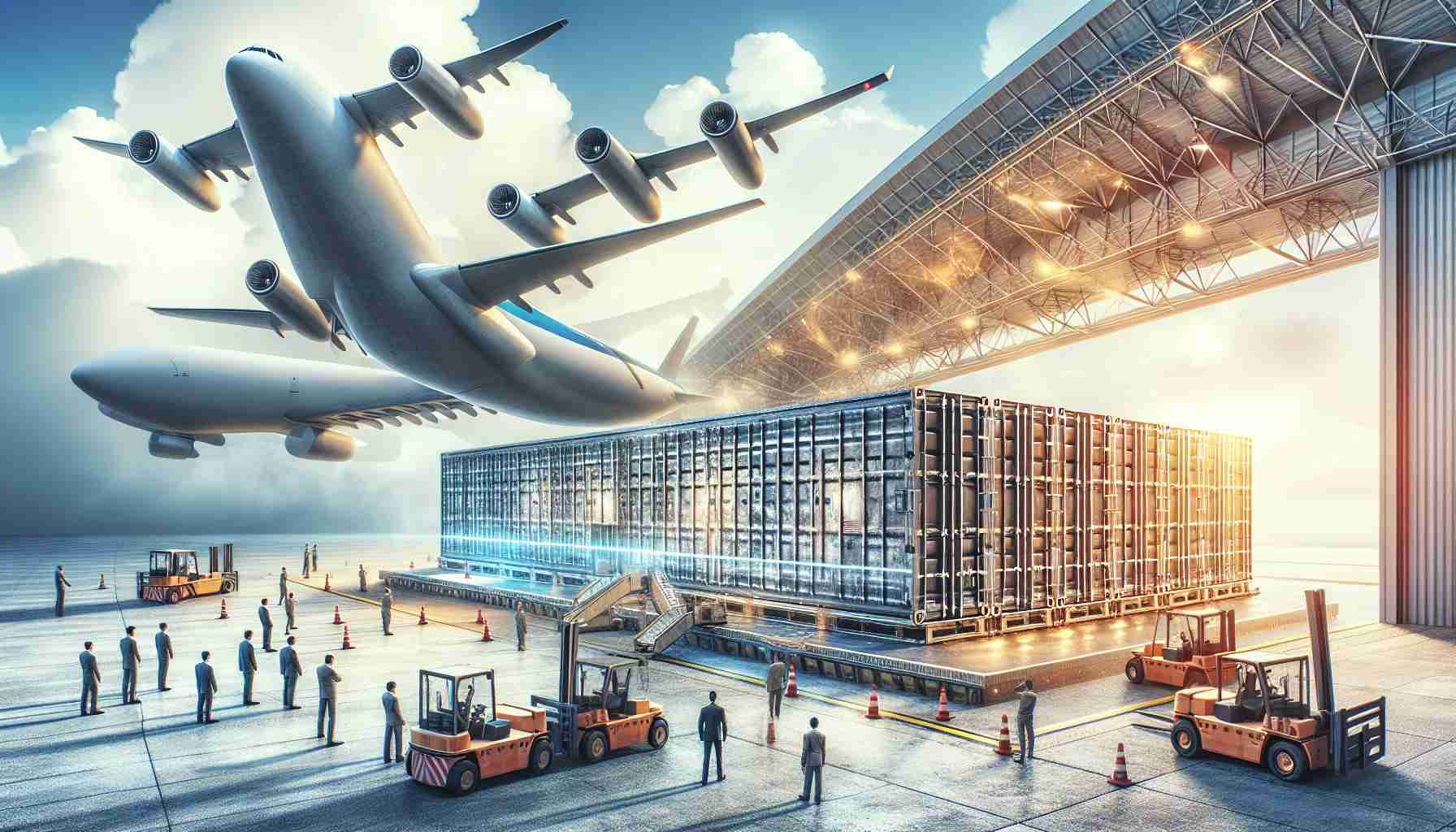- Nordisk Aviation has introduced fire-resistant AKE containers designed to enhance air transport safety.
- The containers are capable of withstanding lithium-ion battery fires, a notorious risk in cargo transport.
- Emirates is set to utilize these 10,000 lightweight, recyclable containers, emphasizing sustainability alongside safety.
- A rigorous test involving 1,000 lithium-ion battery cells demonstrated the containers’ ability to contain fires without spreading.
- This advancement marks a significant step forward in addressing the risks posed by undeclared lithium-ion batteries in aviation cargo.
- The partnership between Nordisk Aviation and Emirates exemplifies innovation and a commitment to reducing the carbon footprint of air transport.
- The AKE containers establish a new standard for safety and sustainability in the aviation industry.
The aviation world just transformed with the introduction of Nordisk Aviation’s pioneering AKE containers, poised to rewrite safety standards in air transport. These cutting-edge, fire-resistant units, destined for Emirates, promise unparalleled protection against the notorious dangers lurking in everyday cargo: lithium-ion battery fires.
Imagine a sleek, silver fortress cruising through the skies, packed with not just passengers’ essentials but a secret power against unforeseen disasters. These 10,000 lightweight containers are meticulously engineered, adept at confronting the fiery tempests that Li-ion batteries can unleash.
Nordisk Aviation’s containers don’t stop at fire resistance. Sustainability takes center stage, with fully recyclable components crafted to embrace a greener tomorrow. Each container whispers responsibility, ensuring a decreased carbon footprint without compromising on safety.
This isn’t just theoretical prowess. With unyielding resolve, Nordisk and Emirates subjected these containers to a trial by fire. Picture a maelstrom—1,000 Li-ion battery cells ensconced within luggage, mingling dangerously with flammable materials. As flames threatened chaos, the AKE containers held firm, containing the blaze for an exhaustive six-hour ordeal, exemplifying an airtight grip on disaster.
In an era when undeclared Li-ion batteries continue to haunt the airline industry, Nordisk Aviation’s revolutionary approach shines as a beacon of innovation and reliability. By decoding the intricacies of fire dynamics and harnessing advanced technology, these AKE containers establish a new paradigm for safety and sustainability in aviation.
This partnership with Emirates not only shields planes from potential catastrophe but also pioneers a future where air travel weds safety with responsibility. Each container tells the story of progress—a remarkable stride in safeguarding our skies.
Revolutionary Containers Set New Standards for Aviation Safety
Features, Specs & Pricing: Understanding the Nordisk Aviation AKE Containers
The Nordisk Aviation AKE containers represent a groundbreaking innovation in air cargo safety. These containers are designed with fire-resistance technology capable of withstanding the potential devastation of lithium-ion battery fires without jeopardizing passenger safety.
Key Features:
– Fire Resistance: The containers are constructed with advanced materials that can contain fires caused by lithium-ion batteries for up to six hours.
– Sustainability: Made from fully recyclable components, the containers reflect a commitment to reducing the airline industry’s carbon footprint.
– Lightweight Design: Despite their robust safety features, the containers are lightweight, which translates to improved fuel efficiency and reduced operational costs for airlines.
Pricing details are proprietary, but industry insights suggest that such specialized equipment involves a significant investment designed to provide long-term cost savings through enhanced safety and efficiency.
Real-World Use Cases and Market Forecast
These shipping containers are slated for use by Emirates, highlighting a trend where major airlines invest in innovative safety solutions. With the rise of e-commerce and the increasing frequency of undeclared hazardous materials, the aviation sector is projected to see a growing demand for fire-resistant shipping technologies.
Industry Trends:
– The global air freight industry is expected to grow by approximately 4-5% annually, per the International Air Transport Association (IATA).
– Airlines are increasingly focusing on safety innovations, driven by regulatory pressures and heightened public safety expectations.
Pros & Cons Overview
Pros:
– Enhanced Safety: The ability to contain fires ensures passenger safety and protects cargo.
– Environmental Responsibility: Fully recyclable construction supports sustainable practices.
– Operational Efficiency: Lightweight build aids in cutting fuel costs and increasing load capacity.
Cons:
– Initial Investment: High upfront costs may deter smaller airlines.
– Specialized Use: Primarily beneficial for routes and cargo with a higher risk of fire hazards.
Controversies & Limitations
While the AKE containers signal a technological leap forward, they are part of a controversial industry debate on the broader regulation of lithium-ion batteries in air travel. The challenge lies in enforceability—ensuring all carriers adopt similar technology to maintain consistent safety standards across the board.
Security & Sustainability: Maintaining a Safe Sky
Nordisk Aviation not only prioritizes fire safety but also embraces sustainability. The containers’ design reflects an eco-conscious approach, a crucial aspect as airlines face increasing scrutiny over environmental impacts.
Expert Insights & Predictions
According to aviation safety expert John Hansman, “Technologies like Nordisk’s containers are critical steps forward in mitigating significant risks associated with airline cargo. However, implementation and compliance across the industry remain key challenges.”
How-To Steps & Life Hacks for Airlines
1. Investment in Safety Technology: Airlines should allocate budget resources to adopt similar technology, reducing the risk from hazardous materials.
2. Training: Regularly update and train staff on new cargo safety protocols.
3. Embrace Sustainability: Encourage adopting recyclable and eco-friendly materials in all aspects of operation.
Conclusion and Recommendations
Airlines are encouraged to explore partnerships with innovators like Nordisk Aviation to enhance safety measures. Investing in fire-resistant cargo containers not only shields assets but aligns with global movements towards sustainability and environmental responsibility.
Incorporating cutting-edge safety technology can improve brand reputation and foster customer trust in an increasingly competitive aviation market.
For further information on aviation innovations and trends, visit Nordisk Aviation and Emirates.



